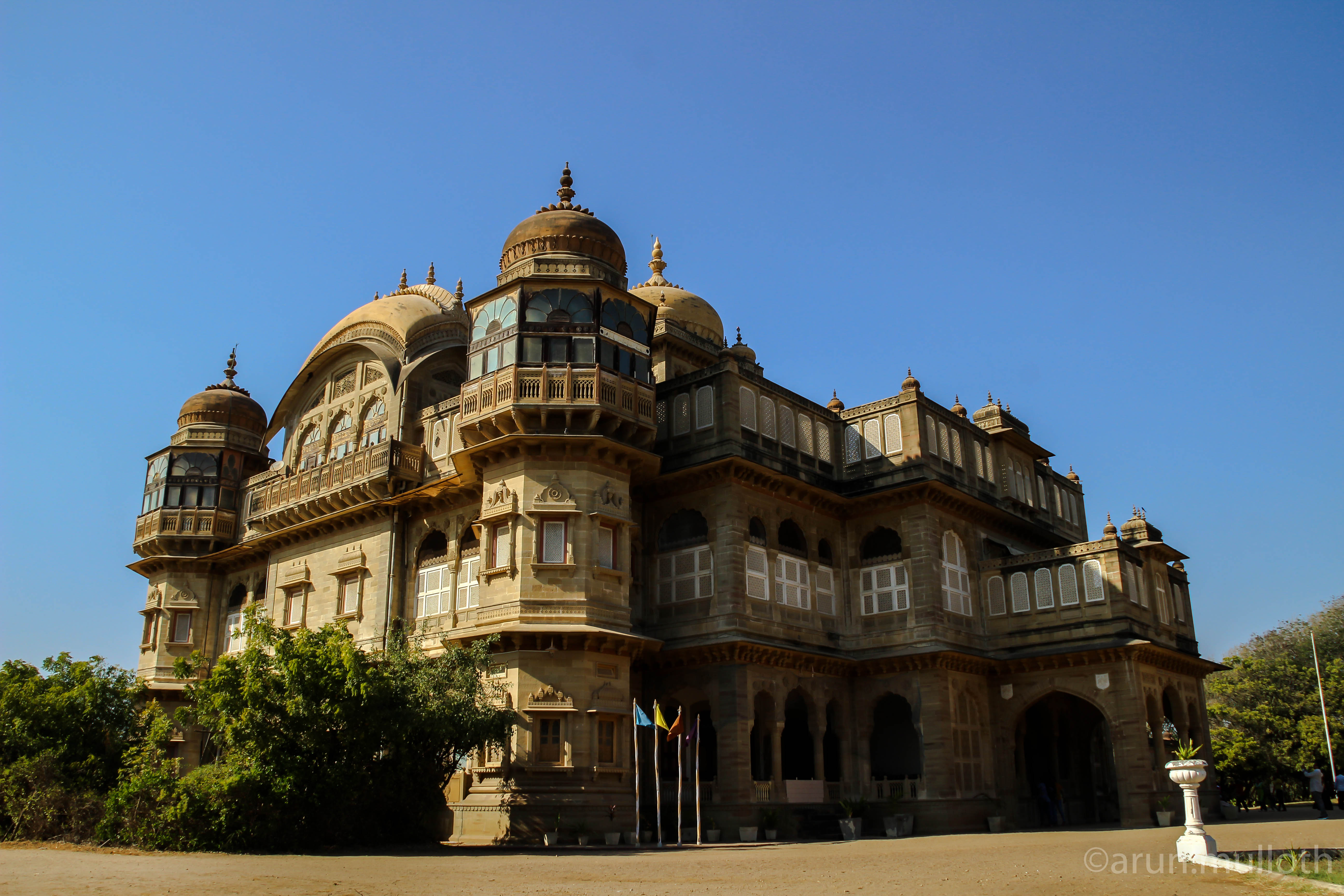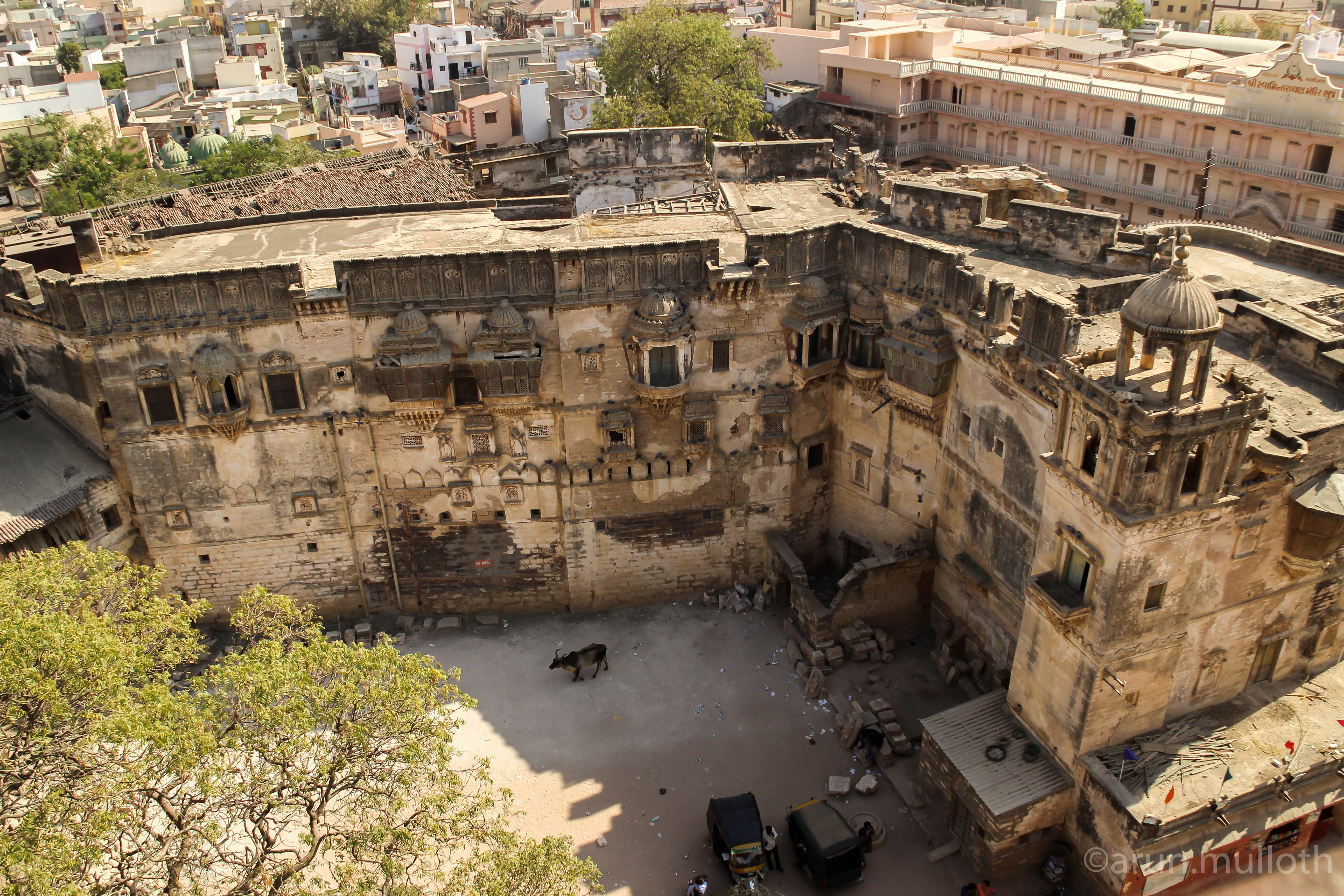“Kutch nahi dekha toh kuch nahi dekha”, ( translated to “You haven’t seen anything, if you haven’t visited Kutch”) Big B’s baritone voice was the one thing that kept echoing in the head when we set foot in Kutch, Gujarat’s largest district. Though we did not quite completely believe in the line initially, a quick 3 day visit was enough to prove us wrong; wrong enough to make us want to start our first blog.
While the entire region is characterized by endlessly straight tar roads, barren brownish-yellow soil, cloudless powder blue skies and thorny bushes, the vibrancy in the region is lent by tiny villages with its rich heritage art forms, houses with unique colourful doors, big horned Kankrej cows, pink flamingos, bustling markets, gastronomic Gujarati thalis and the friendly locals.

Flamingos and sea gulls 
Handicrafts 
Rogan Art 
Gujarati Thalis 
Kankrej Cow 
Mud bhungas
We timed our visit to Kutch around a full moon night to witness the glistening silver of the White Rann making it one of the best experiences of the trip.
We also witnessed some of the most beautiful sunsets during the three days against different backdrops, gorged on some of the best “Mava” and “Dabelis” and experienced the warmest hospitality.
We arrived at Bhuj by an overnight bus (approx 6 -7 hours) from Ahmedabad. Bhuj is well connected by road, rail and air to almost all the major cities in Gujarat and India. We hired a taxi for our local transport during our three day stay in Kutch.
Map of 3 day itinerary in Kutch and other places of interest
Day 1 : Sleepy village of Devpar-Yaksh & coastal town of Mandvi
Devpar – Yaksh a sleepy little village, about 40 kms from Bhuj, was our first stop in Kutch. We stumbled upon this beautiful “homestay/ AirBnB” (locally called Darbargarh) with a royal connection while doing our research and decided to stay there on the first night of the trip. The journey to Devpar -Yaksh is about an hour from Bhuj. We spent the first half of Day 1 simply astounded by the simple grandeur of the haveli, interacting with our wonderful hosts who took us around this tiny hamlet, walking through its winding alleyways with unpretentious houses with colourful doors and listening to the interesting folktales of the region.
Read more about the tiny hamlet of Devpar -Yaksh and its folklore in our related post – Royal Homestays, folklores and beautiful doors
We spent the second half of Day 1 exploring the ancient port city of Mandvi, driving past its ship building yards, visiting the Vijay Vilas Palace, munching on “Dabeli” and finally watching the sunset and a spectacular moonrise on a beautiful hidden beach. We ended the day with dinner at the famous Osho’s restaurant feasting on a finger-licking good Gujarati thali.
Read more about How to spend an evening in Mandvi here



Day 2 : Devpar to Rann of Kutch – Off beat and unexplored
Enroute from Devpar to the White Rann we made a pitstop at the Kutch Fossil Park, a private fossil collection of Mr. Mohansinh Sodha, a war veteran who has single-handedly collected fossils from the region. This one room museum houses a number of Jurassic, Cretaceous and Tertiary fossils which includes a tail bone of a dinosaur, dinosaur eggs, fossils of a sea cow (also named “Dommingia Sodhae” after Mr. Mohansinh Sodha) and several other plants and sea creatures. The caretaker of the museum told us that Mr. Mohansinh Sodha is usually around to explain visitors about the fossil collection but to our luck, he was out that day with a few visitors.
We weren’t aware that so many species of the extinct mammal once roamed these regions of the planet and it made an interesting visit for us.

Fossils of dino eggs 
Fossils 
Dinosaur tail bone
While at the museum, we chanced upon a poster of all the places of interest near by and noticed a small postcard picture of “Than Monastery”. It was a 15 min drive and we decided to make an impulsive detour to the place. What we presumed to be a monastery was actually a desolate temple complex with a number of small domed shrines adorned with vermilion smeared idols, delicately carved jharonkas, derelict buildings and arched porticoes. As we walked through the huge complex, we noted mural paintings adorning some of the ceilings, a run- down temple chariot and a number of locked rooms. The whole place oozed a feeling of mystery, like it held a lot of stories within the confines of its walls.
A couple of carpenters were the only people in the complex and based on the little conversation that our friend cum driver & guide managed with them, the only information we got about the place was that a baba with divine powers came and and built it long ago. It was Google (thanks to a few other tourists who had visited and were kind enough to blog about it) who enlightened us with more history and origins of this lesser known monastery and its inhabitants; the Khanphata yogis.





Our last stop before the Rann of Kutch was the village of Nirona, world- famous for its ancient art form of Rogan Art, handmade copper bells and lacquer work. We visited the humble shop of the Khatri family who are the only family practicing and preserving the unique art form of Rogan, its origins in Persia, which came to Kutch 400 years ago. We all stood spell bound watching Munaf , the artist, patiently explaining and creating beautiful motifs using a thin needle and vegetable dyes. Each piece of art work takes anywhere between 4 weeks to 6 months to create. The “Tree of life” design is their trademark motif and is part of several pieces of artwork, each one being unique in its design and colour combinations.

“Tree of life” design 
Rogan art using vegetable dyes
And then we finally headed towards the Rann of Kutch !

Rann of Kutch – White desert
With the Rann utsav being held from November to February, it is advisable to make your bookings for stay well in advance, especially if you are timing your visit around the full moon. While the tents and cottages at the Rann Utsav camp have the advantage of proximity to the Rann, unless you book in advance, it might be a tad heavy on the pocket, especially if you’re looking at budget travel. After a lot of enquiry, we managed to find a couple of “Mud Bhungas” at a newly opened property at Dhordo, the entry point to the Rann.
As soon as I saw these “Bhungas” or mud houses, I remembered all the geography lessons in school where we were taught about the properties of a a mud house, which was it’s ability to regulate temperature within irrespective of the temperature outside. And now was the time to see if all those lessons were true. We reached our accomodation at about 1 in the noon and it was prickly hot outside and to our amazement, the mud bhungas were cool and almost air conditioned like on the inside. Similarly when we came back in the night, it was freezing cold outside, but relatively warm and cosy on the inside. Voila! almost like magic !

Mud house 
Our camel ride “Baadal” 
Inside a “Mud Bhunga “
After lunch, we took entry permits (Rs.100/- per person and Rs 50/- for car) to the Rann at Dhordo BSF checkpoint and headed off to see the White desert. As you drive down from Dhordo to the Rann, you can see the gradient change in the colour of the terrain, from a wild green to a patchy one, to a brownish yellow and a sandy brown before it becomes into a dirty white. The Rann Utsav is the entry point to the white desert and this is where all the buzz is happening. Tents, crowds, music and food stalls add to the flurry of activity. While walking is a good option, we took a camel ride to reach the White Rann.

Sunrise at Rann of Kutch 
Moonrise at Rann of Kutch
The fact about what makes the desert White is even more interesting. The low lying marshy salt flats fill up with water from the Gulf of Kutch during the summer- monsoon every year making the entire desert resemble a sea. The water evaporates by December, crystallizing the salts, giving the area its remarkable white appearance.
The magnificence of the Rann is something that needs to be seen to be believed. Watching the sunset and moonrise against the vastness of the white salt flats has to be one of the most sublime experiences in my life. The expanse and beauty of the white desert makes you think, put things in perspective, of nothingness and of how you are just a tiny speck in the grand scheme of things.



We spent an evening there, experimenting with perspective photgraphy and just being astounded by the beauty of the place. The Desert gleams and glistens whiter and whiter as the moon rises high into the sky and is indeed a sight to behold. It is indeed right to say, “Rann nahi dekha, toh kuch nahi dekha”.
Day 3 : Bhuj
Bidding goodbye to the Rann of Kutch, we made our way to Bhuj, but not before stopping at Bhirandiyara village, a couple of kilometers from Dhordo, which is famous for its “Mava”. Gorge on the rich sweet made from milk and I am sure you will not stop at one serving.
We spent a good part of Day 3 exploring the sights and sounds of the city and finally ended the day, watching another spectacular sunset dipping with the city in its backdrop, leaving me wanting to spend some more time in this beautiful and unexplored region.





And with that we ended our short but memorable trip. Kutch is one of the most underrated and unexplored places in the country. The region has so much more to offer, other than the obvious Rann of Kutch. It is a place that warrants time, where you need to relish and experience the barren beauty of the region while uncovering a lot of hidden gems along the way.
TTH recommends in Kutch :
1) Visit the White Rann on a full moon night to see the desert in its white glimmer and on a new moon to see the stars and Milky way .You will not regret it 🙂 !
2)Try local cuisine (Dabeli at Mandvi, Mava at Bhirandiyara and the famous Gujarati “thaalis”)
3)Watch a lot of beautiful sunsets.
4)Visit and shop at the numerous artisan villages in Bhuj (Bhujodi, Khavda, Nirona, Hodka, Ajrakhpur to name a few)
Kutch is a place that warrants more than a three day visit and while the above places top the list, here are a few other places you may want to explore in and around the area (someday hoping to go back and explore them 🙂 )
1) Ekal ka rann (Enroute to Dholavira, this section of the White Desert is less crowded and also is whiter, as told by the locals)
2) Dholavira, known for its relics from the Harrappan civilization (one day trip from Bhuj).
3) The region has numerous sanctuaries (Narayan Sarovar – a birding sanctuary; Little Rann of Kutch – known for wild asses and birds)
4) Lakhpat – a ghost village about 130 kms from Bhuj, close to the Pakistan border.






Great post, very informative and yet with a lot of personal touch …almost transporter me to this amazing place! Hope to visit sometime soon.
LikeLike
Thanks Anand ! 🙂
LikeLike